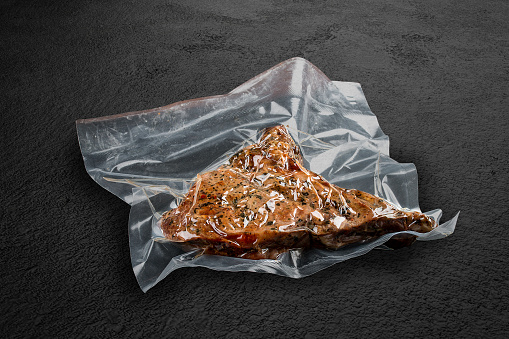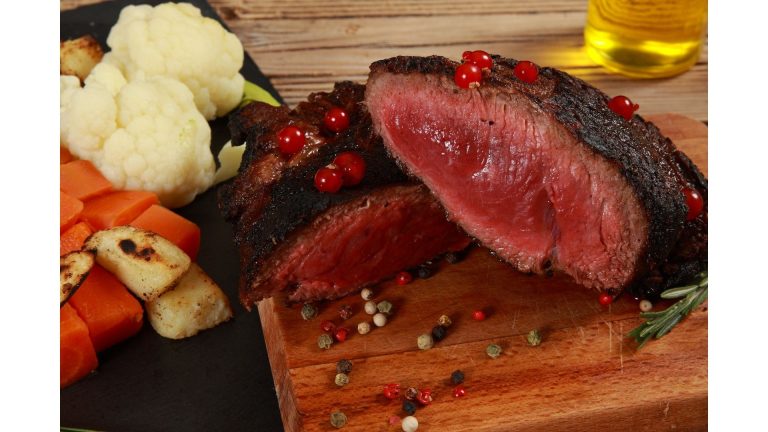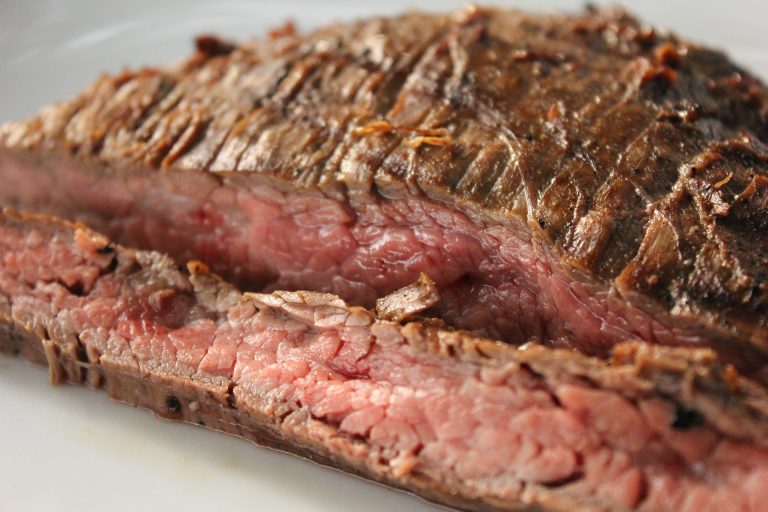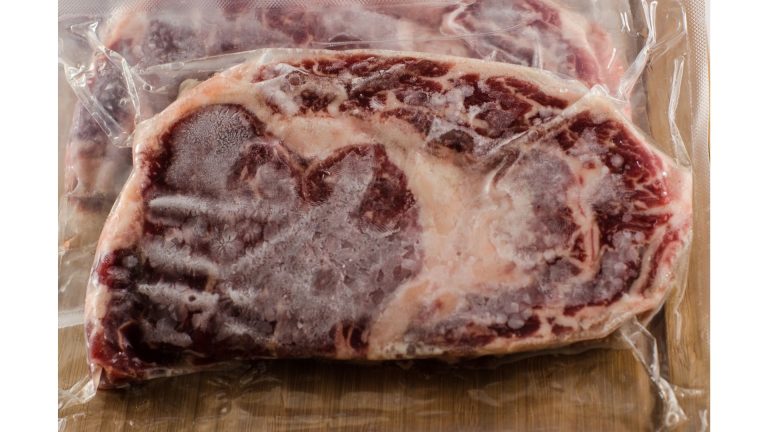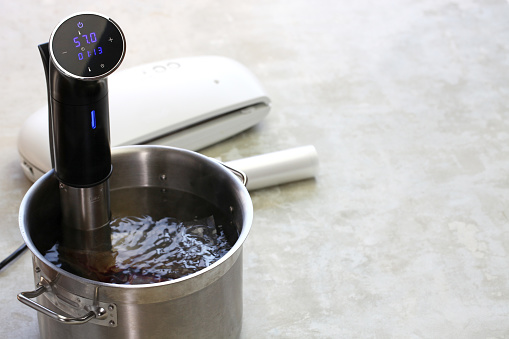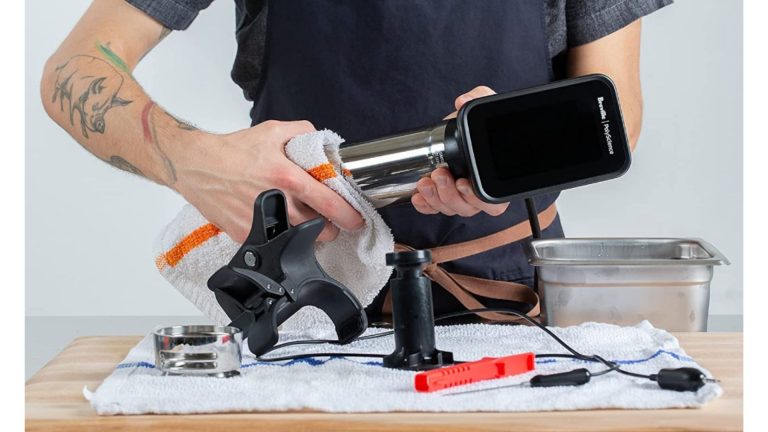Best Steak Cut for Sous Vide [Guide]
The world of sous vide steaks is growing, and there are many different cuts of meat that you can cook.
This post will explore the best cuts of beef for sous vide cooking, as well as how to make them look and taste delicious.
Sous vide steaks offer a great way to create a perfectly cooked piece of steak without overcooking it, and the results are always top-notch.
Table of Contents
Best Steak Cut for Sous Vide

You can buy a lot of steaks at the supermarket. But when it comes time to serve up that steak, you’ll discover there’s a whole lot of difference between the best cut and the rest.
Sous vide cuts the guesswork out of preparing meat and turns any meal into a one-of-a-kind, tender, and juicy feast.
In this article, we’re going to walk you through what makes sous vide steak special.
Sous Vide Filet Mignon
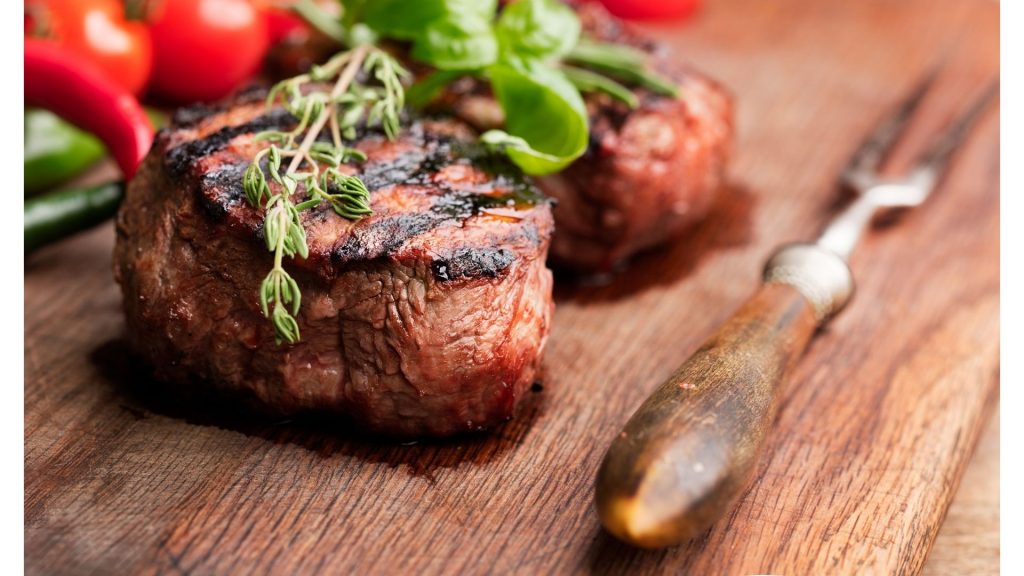
Filet Mignon Steak is a high-quality cut of beef. It’s also very expensive. A single pound of filet mignon steak is around $45-60 dollars.
If you were to get one pound of rib eye, the price would be about $20-25 dollars. The reason why the filet mignon steak is so expensive is that it requires more skill and care to produce.
It takes longer to cook and the cooking process has to be done very precisely. You can’t have any mistakes in the cooking process.
Sous Vide Ribeye
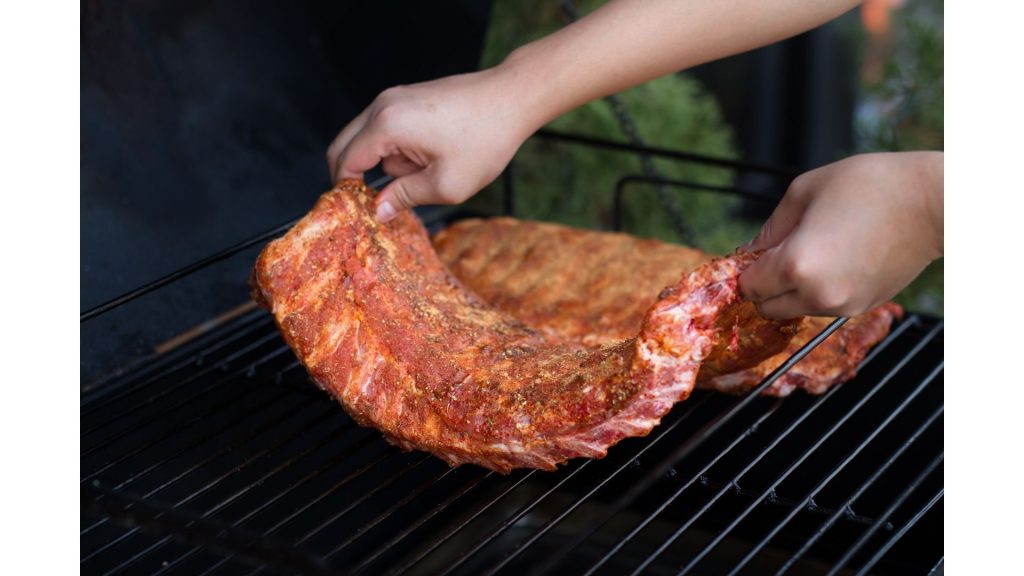
Your rib-eye steak is dry, tender, and oh-so juicy. But did you know that it’s a bit more than a simple steak?
When you bite into a rib-eye steak, your first impression is one of tenderness, juiciness, and flavor.
You can experience this yourself by ordering rib eye steak from your favorite steakhouse.
After that, you’ll start to notice an aroma, a hint of smoke, and a taste that’s so delicious, you won’t be able to stop.
The best part of this is that it’s not a one-and-done experience. As you chew, the meat releases flavors and oils, creating a new and different sensation every time you taste it.
Sous Vide New York Strip / Kansas City Steak
How often do you crave something out of a restaurant menu that you really can’t quite pronounce?
Well, if you’re from Kansas City, you’ve probably asked yourself this question at least once before. If you’re a true foodie, you’ll likely have done this quite frequently.
But what exactly is this culinary mystery you’ve been seeking? It’s a delicious, succulent, thick cut of steak—and it’s also known as New York Strip Steak.
This thick, flavorful steak is a traditional cut that originated from Kansas City, Missouri. The strip steak is generally the most popular choice for any carnivore.
And for good reason—it’s an incredibly tender steak that offers tons of flavor with a hint of smokiness. Here are some tips on how to serve up the perfect New York Strip Steak at home:
Sous Vide T-Bone
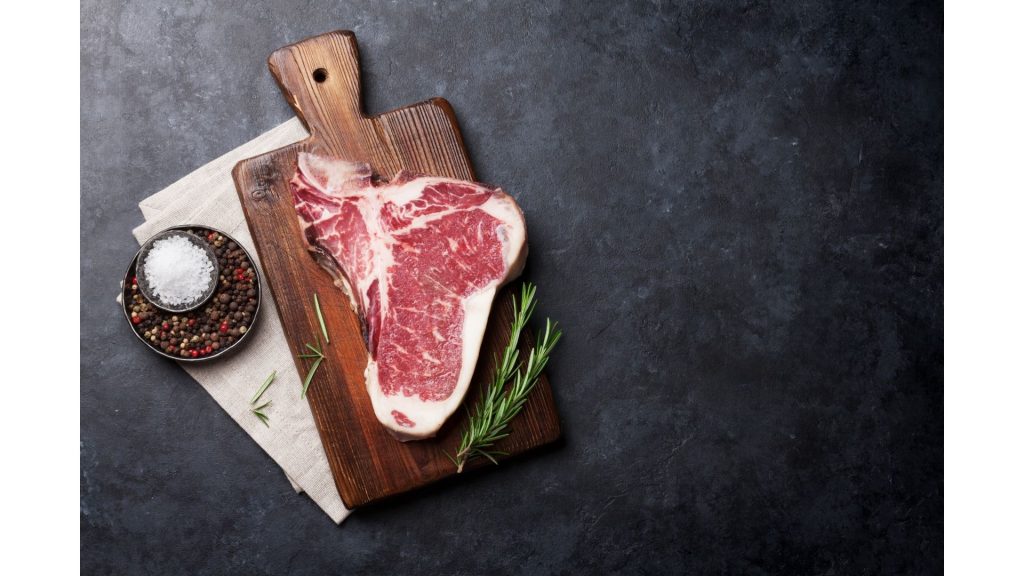
T-Bone steak is a beef cut that comes from the rib eye area of the steer. It’s a lean, tender steak that’s perfect for grilling and can be served as an appetizer or a main course.
This steak is marinated in a tangy citrus marinade before being grilled over charcoal or a gas grill. T-bone steaks are cooked on the thinner side so they don’t dry out during cooking.
A quick sear on the grill or broiler gives them a nice crust, which is important for this type of steak. If you love barbecue, you should definitely try making this T-Bone Steak recipe.
It will taste amazing with your favorite barbecue sauce. But even if you don’t like barbecue, you’ll still love this recipe.
Sous Vide Sirloin Steak
Sirloin steak is a thin-cut beef steak. They are usually cut with the grain of the meat (parallel to the muscle fibers), but sometimes they are cut across the grain of the meat (perpendicular to the muscle fibers).
Sirloin steak is a type of steak that has a thick piece of meat attached to the bone. This steak is very tender, flavorful, and juicy.
Sirloin steaks can be found in the top sirloin area, and in most cases, the steak will have a thick strip of fat or marbling on the top side.
Cutting a steak for cooking may differ from cutting it for display.
Sous Vide Hanger Steak
This steak is called a hanger steak because it hangs down from the bottom of the cow. It is attached to the muscles that attach to the animal’s lower leg.
A Hanger steak is a muscle that runs along the linea alba (linea alba), a muscle that runs along the front of the belly of an animal.
The Hanger steak is one of the three most tender cuts of meat, along with loin and sirloin.
Hanger steak is the most tender, flavorful steak you will ever taste. It’s a tender cut from the bottom sirloin that runs along the outside of the muscle.
It has very little fat and is usually very lean.
Sous Vide Flank Steak
A flank steak is a cut of meat taken from the underside of a steer. It is used in cooking for its flavor and tenderness.
A flank steak is a steak that has been cut from the midsection of the animal’s body (just below the ribcage). It is sometimes referred to as a “belly steak” or “beef sirloin”.
The steak can be cooked by any method, but it is typically grilled, broiled, pan-fried, or barbecued.
Flank steak is a very versatile cut of meat and can be cooked in many different ways.
Sous Vide Steak FAQ
What Temperature and for How Long Do You Sous Vide Steaks?
If you’re talking about cooking steak, I recommend sous vide. The temperature can be as low as 140 degrees F (60 degrees C) and the time is only about 30 minutes to one hour.
It’s a good idea to use a thermometer to make sure you don’t cook your steak past the desired point.
As you know, the best method for cooking steak is to cook it sous vide (or “under vacuum”).
Sous vide machine cooks meat in a sealed pouch of water at a specific temperature for a certain amount of time.
At the end of this time, the steak will be perfectly cooked, and retain all of its juices.
How Thick Should Steak Be for Sous Vide?
It’s all about taste. The meat will always be moist when cooked sous vide, but to make it tender, you need a steak that’s more like a loin or hanger than a skirt steak.
A 1-inch thick steak should be tender enough to eat with a fork.
The thickness of steak is up to you. Some people like it super thick and some prefer it medium-rare.
I’ve found that it’s best to go with what your guests want.
Do Sous Vide Steaks Need to Rest?
No. Sous vide steaks do not need to rest before you cook them. You can cook them as soon as you remove them from the sous vide bag, and they will be just as delicious as if you had left them in the bag for 3 hours.
Sous vide steaks are cooked slowly, at a lower temperature than you would typically cook them.
The result is an incredibly tender steak with incredible flavor that is perfect for cooking at home.
The most important thing when it comes to cooking a steak is to avoid over-cooking it. A steak that is cooked through properly is done.
This can be confirmed by inserting an instant-read thermometer in the thickest part of the meat.
You want to make sure you cook the steak at least two degrees above medium rare and the internal temperature will read 130-140 degrees F.
If you are going to serve your steak as is, you can serve it immediately, but if you are going to pan fry it, the steak must be allowed to rest for five minutes before you cook it.
After resting, the steak can then be pan fried or broiled.
How Do You Sear Sous Vide Steaks?
Vacuum sealing steaks, or vacuum packaging as it is sometimes referred to, creates an airtight pouch around the steak.
This prevents oxidation and allows the steak to stay moist and juicy while cooking. For sous vide steak, you must use a low-temperature sous vide water bath (160 degrees F / 71 C).
You just cut up steaks and seal them in vacuum bags. Then put them in water baths or even sous vide circulators.
You don’t have to worry about overcooking and drying out.
See also: Sous Vide vs Reverse Sear for Steaks
Is Sous Vide Steak Better Than Grilled?
Yes, it’s true, sous vide steak is better than grilled steak!
But there are times when you want to grill your steak. For example, if you’re grilling for company, or you just want to make a quick steak dinner at home.
Or maybe you’re grilling out in the backyard on a summer night. In any of those cases, you’ll need to know how to properly cook your steak without the dreaded char.
See also: Sous Vide vs Grilling
Do Restaurants Sous Vide Steaks?
Yes, restaurants use sous vide techniques to cook steaks to perfection. The method uses a vacuum sealer to create an ultra-low-temperature chamber.
A steak is placed in the chamber along with a vacuum bag, and it’s cooked for about three hours at a low temperature, which causes the meat to retain all its juices and nutrients while cooking.
Most restaurants these days do sous-vide steaks, but some restaurants offer a whole menu dedicated to that concept.
This article lists several well-known restaurants offering steak sous vide.
Should You Season Steak Before or After Sous Vide?
If you’re cooking steak on a grill, season it before cooking. In the sous vide method, you can cook the steak for longer without any seasoning.
In this case, you should season after cooking.
Both ways are fine. However, I recommend pre-cooking a steak over low heat in an oven, and then putting it into the sous vide.
This way, you can add seasoning at the end of cooking, when the steak is ready to eat. For steaks, I use a 1.5 inch wide strip steak, which is about 3/4 inch thick.
The temperature of the water is important. It should be around 100°F / 38°C. You can adjust this temperature to suit your taste.
Can You Sous Vide Steaks from Frozen?
Absolutely! In fact, you can make sous vide steaks from frozen beef for a great, tender steak.
This method allows for an easy way to cook meat in a sealed bag in a water bath at precise temperatures.
Make sure you have the right meat cut for this method and follow the instructions.
It is possible to sous vide steaks from frozen. If you use a high-pressure canner and vacuum seal the steak first, you can sous vide steaks from frozen.
This would be a great method for people who don’t want to use dry heat or a smoker.
See also: How to Sous Vide Frozen Steak?
Can You Freeze Sous Vide Steaks?
Yes. In fact, that’s what makes this sous vide cooking method so great! Since there is no way to overcook a steak or a chicken breast, you can simply place them in the sous vide and leave it to do its thing.
Then, when you’re ready to eat, simply put the cooked food into a hot oven for a few minutes.
The food will cook perfectly every time, without any risk of overcooking or burning. Plus, since the food will stay moist all day long, it can be eaten cold or at room temperature.
How Do You Reheat Sous Vide Steak?
If you want to reheat sous vide steak in an oven or microwave you can use a heat-resistant container.
But if you want to enjoy your food at its best you should let it rest before cooking it again.
Heat it in a large oven set to 350° F for 5-6 minutes per side or heat it on the grill at medium-high heat until the internal temp reaches 145° F.
This will cook the steak at a low temp, which will keep it tender and juicy.
How Do You Cook Sous Vide Steaks to Different Temperatures?
The easiest way is to preheat your sous vide circulator to the temperature you want to cook the steak at (400F for medium rare) and place it in a large zipper bag.
Then add your steaks to the bag and zip it up.
When you are ready to eat, just run the bag under hot water until it comes out of the heat and into the refrigerator where it will continue to cook until it reaches the desired temperature.
Conclusion
Sous vide is an amazing cooking technique that allows you to cook food at a precise temperature for longer than you can with conventional methods.
It’s a very hands-off approach that also has a lot of advantages.
For example, it’s easy to add aromatics or spices to foods, and you don’t have to worry about undercooking or overcooking.
Sous vide also makes it possible to cook food in a variety of different ways.

Foodie and a passionate cook, I am here to share all of what I know about cooking, kitchen, and food prepping.
Follow me for delicious and healthy recipes.

